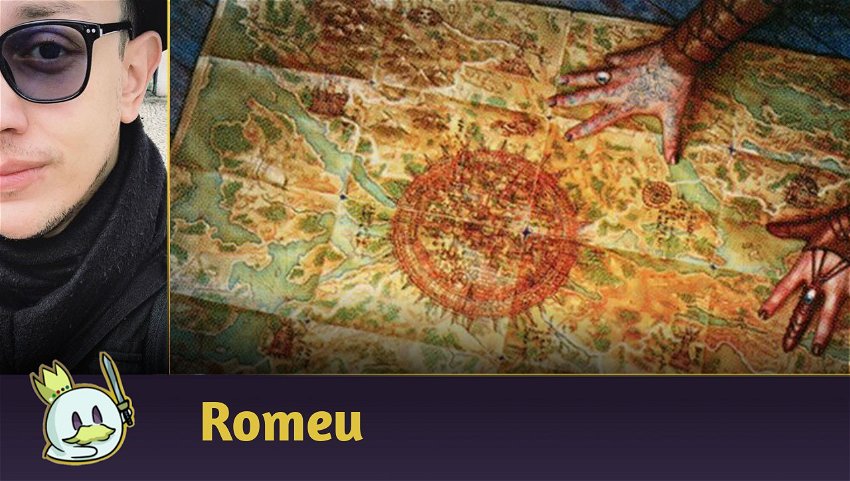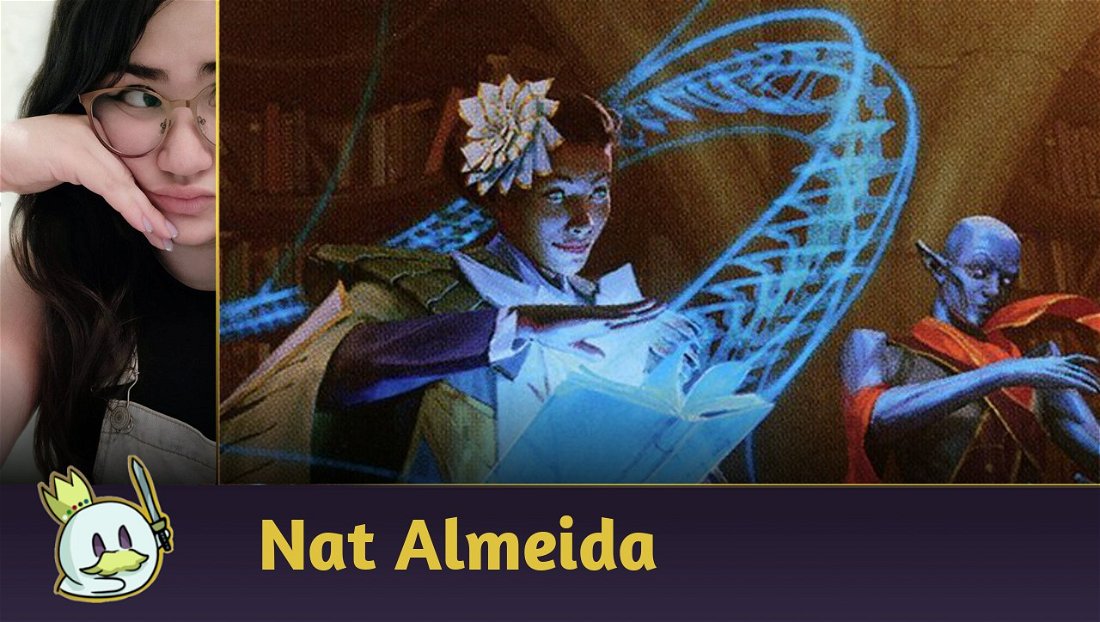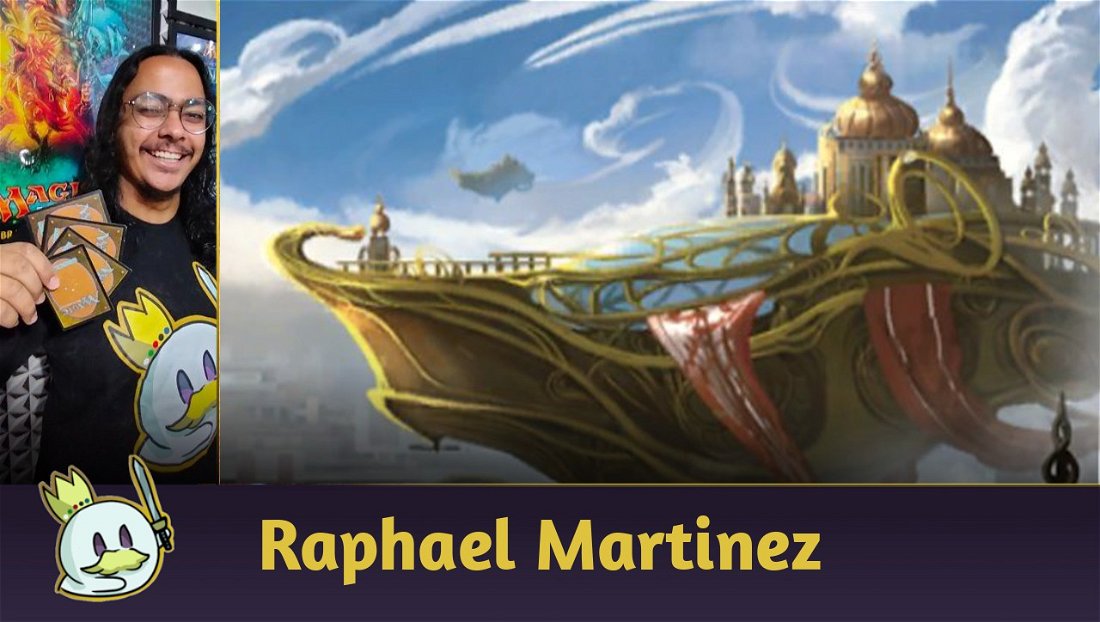During the pandemic, Modern has changed forever. Players complain to this day that the impact Modern Horizons II had on the Metagame was so huge that it invalidated a dozen archetypes, completely transformed others, and managed to establish fear in players that an upcoming set dedicated to the format could turn their investment into ash.
In today's article, we are going to present some decks that, in theory, manage to pass almost unscathed from what we call the "Horizons effect", making them relatively safe investments for those who want to enter Modern without the risk of their list becoming completely useless without acquisitions of a dozen cards from another high-power level release.
Ad
The Flexibility Factor
But how exactly do we define which decks are more or less likely to suffer from the impacts that another future Horizons set has on Modern? After all, the format seemed completely solid until Ragavan, Nimble Pilferer, Solitude, Murktide Regent and Shardless Agent changed the competitive landscape.
While, yes, every deck is liable to undergo major changes with new releases, some decks are more resilient to change than others. Usually, this involves the relationship between the strategy it proposes and the cards it runs: the more focused a deck is on its plan, the lower the odds of needing too many new pieces.

Let's use one of my favorite decks as an example, Death's Shadow. This is one of the most flexible strategies in Modern since its rise in 2017, with Jund, Grixis, Mardu and Rakdos variants, each proposing a different strategy, but running basically the same core of Fetch Lands + Shock Lands + Thoughtseize.
What makes Death's Shadow too passive to changes is that the rest of the deck is highly replaceable per Metagame: you don't want Fatal Push when there are few low-cost creatures in the format, and you don't want Lightning Bolt when everything outlives it, then its owner tweaks it as Modern demands, and as a result it needs to better adapt to what comes new - Death's Shadow still works without Ragavan, Nimble Pilferer, it's just worse without it and the albino monkey will be missed in a Midrange mirror.
The more flexible the game plan and the cards that are in the deck, the more likely it is that a "Modern Horizons III" will force you to adapt it with new inclusions that can be expensive and practically rotate your Maindeck and/or Sideboard.
Therefore, to preserve your list for longer, entering Modern with linear strategies is a great option, as their resilience to new things is high, and the card needs to be fantastic to deserve its space. Of course, there are exceptions, like Living End, who adopted most elementals and Force of Negation because they fit perfectly into its game plan, but this exception had to find a very specific cycle of cards that happened to come from the last two Horizon sets.
However, we present below five decks that are theoretically more resilient to the "Horizons effect".
Five Decks that could survive the Modern Horizons Effect
Burn
Burn essentially wants just two things: cheap creatures that attack fast and effective damage spells. Its game plan is geared towards dealing the most damage in the shortest sequence of turns as possible, and it already has several historical staples, such as Lightning Bolt and Boros Charm, to achieve this goal.
In the spell category, it would take an absurd or a very specific reprint for Burn to want to include it on their list. For example, Chain Lightning and Fireblast would be possible reprints on a Horizon set that would become instant staples, but that's as far as the archetype could go in terms of power level today, as Lightning Bolt is already the format's exemplary and most efficient spell in its category, and I can't imagine Wizards releasing an enhanced version of this card without a noteworthy drawback.
Ad
Creatures are where things get a bit gray: Burn's top three threats today are the same as they have been since Khans of Tarkir, and nothing has come close to supporting its game plan so well, not even Ragavan. Therefore, it would take a more aggressive and less punishing one-drop than Goblin Guide, or a creature that offers more collaboration with its strategy than Eidolon of the Great Revel or Monastery Swiftspear, and none of those changes would make Burn an entirely different archetype than what it is today.
Another important point about Burn is that reprints are easy to acquire, and new creatures that could enter the deck would probably only fit into the Burn/Prowess category in Modern, preventing it from becoming a must for every archetype with red in the Metagame.
Tron
Tron is a very specific archetype, whose game plan involves putting together a specific set of lands and casting bomb after bomb until you overwhelm your opponent with value. Its list is essentially made up of Lands, Tutors and Payoffs.
On the Lands side, unless Wizards decides to release a new colorless cycle that is as efficient or faster than Urzatron, the deck is safe, and considering that Cloudpost is banned in Modern, I think Wizards is okay with keeping the 1+1+1 = 7 math. So, for a land to reach Tron in multiple copies, it would have to actively collaborate with what the deck sets out to do: fetch the other pieces. Otherwise, they would at most become one-ofs, as was the case with Boseiju, Who Endures.
The Tutors and Payoffs part are more subject to change: Karn, The Great Creator is a big threat to Tron's stability because it allows a Sideboard toolbox, and any artifact that arrives can be part of it, but also as one-ofs. For the rest, to have considerable changes in this category, we would need things stronger than Eldrazis or Karn Liberated, and at a reasonable cost to cast.
Tutors suffer from the same problem, but would need to be more efficient than Expedition Map and Sylvan Scrying to make a difference, and the weakest among them today is Ancient Stirrings, which basically serves as a cantrip that allows you to look at five cards in that deck. That is, Tron's core is too efficient to make it sensitive to change.
What can happen, however, is the arrival of one or two cards that improve the archetype, but that risk is the same as for any set released inside or outside Standard, as we saw with Karn, the Great Creator.
Amulet Titan
Amulet Titan is in a strange position on this list because, despite its strategy being very linear and following an objective game plan, its slots are absurdly flexible and have already undergone sudden changes with Dryad of the Ilysian Grove and Urza's Saga - both cards offered you greater consistency and a more comprehensive means of winning the game.
However, despite these more recent additions, Amulet Titan has remained with the same core for the last several years, with only a few occasional changes to one-of numbers and the inclusion of utility cards and lands from one set or another, and, as well as Tron, it would take very specific cards for it to go through major changes to the point where its current version becomes obsolete.
Ad
Mill
Mill was an archetype that no one took seriously for decades, but which slowly gained additions one set after another until it became one of Modern's contenders today. It's another odd case because this strategy wasn't viable and didn't exist until mid-2021. This archetype is very similar to Burn in terms of what it needs, but its categories are Mill and Interaction.
The Mill part can always get a new addition or interesting support. A new Hedron Crab would become mandatory, an Archive Trap with another common trigger in Modern would be a staple, a card that allows you to mill many pieces for a low cost would easily fit on the list if it is superior to the current ones, but in general, what fits into this category only works with this deck, and it would be very difficult to change its structure without a combo, which would then be more practical to dedicate an entire archetype to it.
The interaction package is where the real problem lies: an improved version of Fatal Push will become a staple on multiple lists, a more efficient counterspell could replace Drown in the Loch, and less mandatory requirements could make Visions of Beyond become obsolete. A new Elementals cycle could easily fit into these patterns, making current lists worse than versions with new free spells.
Dredge
There is a joke among players that Dredge doesn't play Magic, instead, it plays Dredge, which happens to need Magic: The Gathering cards. The nature of its strategy is absurdly weird, and this makes the deck so resilient to change that virtually nothing, not even Hogaak, Arisen Necropolis, has managed to change it.
Dredge plays entirely around its own mechanics to the point that even the way players distribute cards from the graveyard differs from usual, and for the deck to suffer a Horizons effect, it would need new powerful enablers, or cards that can be used from the graveyard without too much effort, such as Ichorid.
Another possible change to Dredge would come from recreating Bazaar of Baghdad as a spell outside its usual colors, but that would only make it pull a little more towards blue, given that Dredge is the only archetype that runs both Mana Confluence and City of Brass.
However, the downside to building this deck these days is that it always either excels or sucks in the Metagame, as the sideboard pieces line up to counter it. It's currently at a low point with just 1% representation in the format, but on the other hand, Dredge has always been at the forefront of Modern and greatly rewards players who put the time and effort into studying their plays and honing their skills.
Honorable Mention - Hammer Time
Hammer Time is the deck I'm the least confident adding to this list, and therefore leaving it as an honorable mention because it had some significant changes with Modern Horizons II thanks to Esper Sentinel and Urza's Saga. However, it's these cards that have put it at the top of the Metagame radar since the set's release, and at this point, there don't seem to be enough additions to turn the deck into something entirely different.
Ad
Hammer Time has reached the same level as other strategies mentioned here, where any possible new addition to the deck will be a one-of choice rather than a complete change in its structure: except for Colossus Hammer, the other artifacts on the list are one-ofs, and it would take a more efficient tutor than the already powerful Stoneforge Mystic to change it. The same goes for Puresteel Paladin and Sigarda's Aid.
However, the problem with this deck lies in the ease of splashes and the use of quality creatures. For example, there are Orzhov versions that rely on Dark Confidant, Mono-White's Sideboard relies on Sanctifier en-Vec, a splash to blue or red could find interesting new creatures, and so on to the point where the "current version" is suboptimal when compared to the "new version", which perhaps includes a bigger investment in lands in addition to the new cards.
Still, not only does Hammer Time have a solid shell that is difficult to alter, it is also one of the best decks in Modern today, making it an excellent investment today and one that, given time and dedication, a player could work towards building a pool with staples to the other variants, thus preparing for the eventual need to change the splash as new additions appear.
Conclusion
That's all for today.
Modern has gone through some shakeups over the past few years, and the fact that players care about an eternal format 'rotating' demonstrates just how high Modern Horizons II's power creep was, and that the possibility of a third Horizons Set, or even that Tales of Middle Earth changes the format too much again exists.
No deck is entirely safe, but we can mitigate the damage by choosing more linear archetypes that don't have the flexibility to make major changes to your maindeck to the point where they change completely. These six decks are what I consider to be the safest to invest in today without running into so many risks in the future.
Thanks for reading!








— Kommentare0
Sei der erste der kommentiert